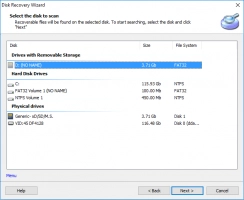Learn everything you need to know to safely edit boot.ini!
In this article you will find out:
- what is this file
- how to protect your data
Are you ready? Let's read!
Boot.ini: what is it?
Installing one of these new Windows operating systems (2000 / XP / 2003) without any warning will change the Windows ™ 9x / Me boot record. As a result, a new OS boot selection menu will appear, which is controlled by the BOOT.INI file. That is, along with the new NTLDR file and other system files of the NT type, you will find the BOOT.INI file, which cannot be easily deleted. You may not like the new OS boot selection menu and want to revert to the previous option. It is best and safer not to delete this file, but simply change the menu so that only the Microsoft® operating systems you want to load are displayed. And you might end up using all the extra files you never asked for!
You will need to put in a lot of effort if you still feel uneasy and wish to restore the original condition of your old Windows 9x / Me partition. In this situation, get in touch with the support center since removing the additional system files on your own is likely to have unavoidable effects, including data loss.
Let's edit it
1. You can do it manually, but be extremely careful: one wrong move and the files will be lost.
If you do not find a file named BOOT.INI on the boot partition, then save it in notepad and keep it there, calling it "BOOT.INI" (in quotes):
Copy and paste into notepad:
[boot loader]
timeout = 30
default = multi (0) disk (0) rdisk (0) partition (1) \ WINDOWS
[operating systems]
multi (0) disk (0) rdisk (0) partition (1) \ WINDOWS = "Windows XP Professional" / fastdetect
Next, update the rdisk (0) and partition (1) values to the correct disk and partition numbers. Make this change to both lines of the ARC path, save your changes to BOOT.INI, and exit notepad.
Be sure to reboot to check the changes.
2. You can try the automatic BOOT.INI creation if you have a Windows XP or Windows 2000 CD.
Boot from the installation disk and, when prompted, “Press R” to do it.
In the recovery console, you may be asked to enter an administrator password for security purposes - do this.
Then enter this into the console:
bootcfg / rebuild
Exit
Next, you will be prompted to name each entry and specify boot options (give it “/ fastdetect” without quotes).
As soon as you exit the Recovery Console, you can remove the installation disc from the drive and reboot.
The Boot.ini file has now been recreated.
If you do something wrong, then most likely, you will lose all the accumulated information
As you can see, editing boot.ini files is a severe and thorough business. Therefore, this article suggests using the professional DiskInternals Partition Recovery application to save your data. The utility has many options for working:
- recovering files of any type and size.
- reading any files.
- creating a disk image.
Before purchasing DiskInternals Partition Recovery, be sure to download and test the free trial (for even more confidence in your choice). This program is equipped with a convenient and reliable recovery wizard that will help you get all your data back, even if this is a new case for you. After scanning, you can view the found folders and files for free (they will be marked with a red cross). All you need is your time and confidence in DiskInternals Partition Recovery. Follow the step-by-step instructions below, and the data will definitely be returned to you.
- 1. Download and install DiskInternals Partition Recovery to your computer.
- 2. Select the main parameters that will be used to search for data: disk for scanning and format of missing data. All this will help you to do the Recovery Wizard.
- 3. Scan the disk using deep(Recovery) or fast(Uneraser) mode. This will take a while, so do something for now.
- 4. To preview files before recovery, right-click on any recovered file and choose "Preview file in a new window".


- 5. To complete the data export process, simply buy a license, which will allow you to save images to any storage device you like (but ideally, it should not be the same gadget as before).
Always with you, DiskInternals!


